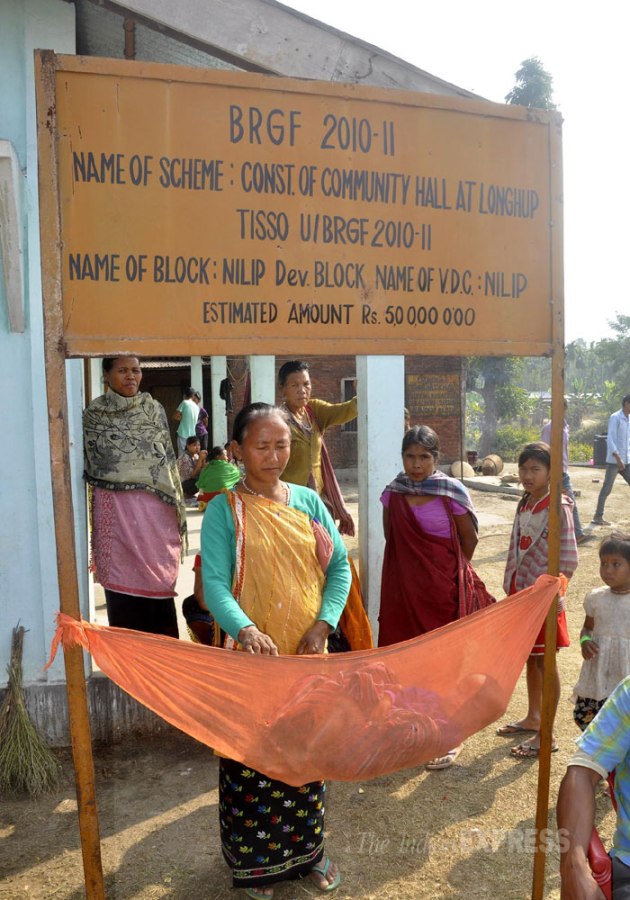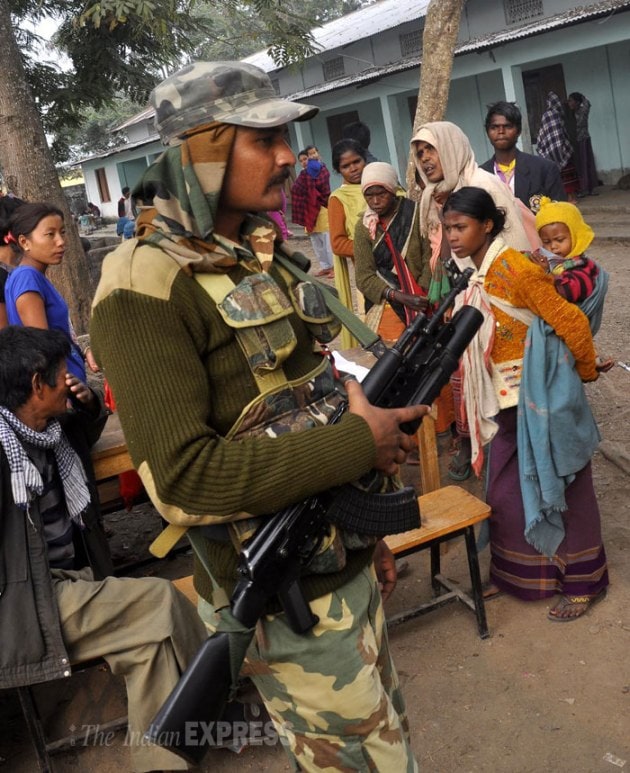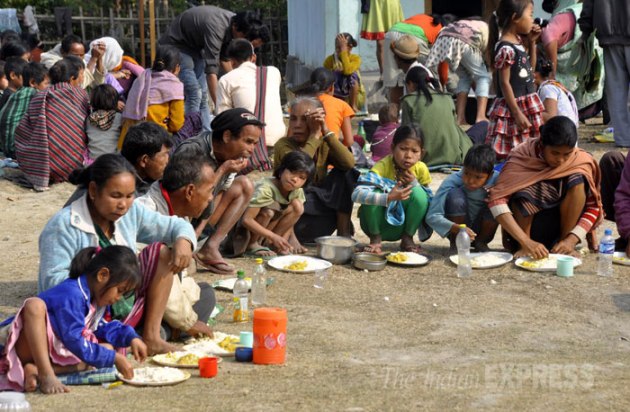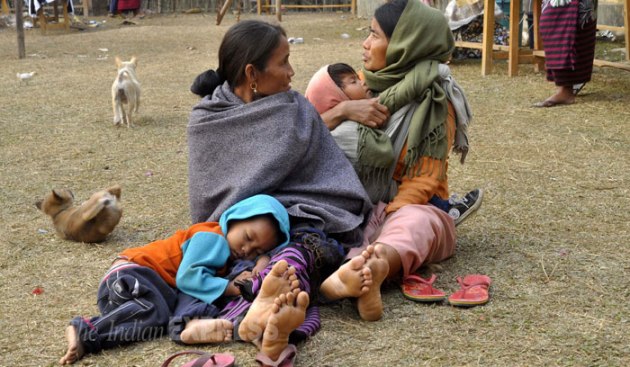Two ignored Assam communities
It took nine bodies in a gorge over the New Year weekend to draw attention to a 24-year-old conflict that has once again made 5,000 Rengma Nagas staying in Assam since at least the early 18th century feel unwelcome. Samudra Gupta Kashyap on two interlinked and ignored communities, and the price they may pay. (IE Photo: Dasarath Deka)
Updated: January 23, 2019 11:13 IST 1 / 10
1 / 10It took nine bodies in a gorge over the New Year weekend to draw attention to a 24-year-old conflict that has once again made 5,000 Rengma Nagas staying in Assam since at least the early 18th century feel unwelcome. Samudra Gupta Kashyap on two interlinked and ignored communities, and the price they may pay. (IE Photo: Dasarath Deka)
 2 / 10
2 / 10December 27, 2013. It was early morning, and still dark. Joshua Rengma, 27, of Khowani village in Assam’s Karbi Anglong district sat by the hearth on which his mother Logu Rengma (48) was preparing tea. His father had stepped out to fetch water when a group of armed youth suddenly appeared in their courtyard and started firing. (IE Photo: Dasarath Deka)
 3 / 10
3 / 10“My father ran away towards the jungle. I pushed my mother and fell down on the floor. But a bullet came through the bamboo wall and pierced maa’s head. In less than a second, another bullet had split open her belly,” says Joshua, sitting on the verandah of Borpathar High School on NH-39, not very far from his village. (IE Photo: Dasarath Deka)
 4 / 10
4 / 10For a fortnight now, the school has been Joshua and his father’s home. As the country celebrated the beginning of a new year, this was a displacement that barely registered, as about 2,000 Rengmas, exploited by militant groups and largely abandoned by the government, left their homes from nine villages and adjoining clusters, re-visited by a 24-year-old conflict. For many, there is no way back. (IE Photo: Dasarath Deka)
 5 / 10
5 / 10All that remains of Khowani, a village of 21 households and its 108 people, now is rubble. Apart from Joshua’s mother, two other women and one man were killed in the early morning attack here. Two elderly women who were unable to flee were killed in village Sathibasti. Two adjoining schools at Borpathar, which have since been functioning as relief camps, now have 1,110 Rengmas, while around 900 others have been put up in two other camps. (IE Photo: Dasarath Deka)
 6 / 10
6 / 10 7 / 10
7 / 10“We don’t know whether we will be able to go back,” adds Keninlo Rengma (52) of Khanari village, tears running down his cheeks. “While one or two houses in our village are still intact, most of our orange trees have been cut to pieces.” Keninlo’s orchard spreads over 10 bighas. “Last year I earned more than Rs 3 lakh selling oranges. This year I was expecting Rs 5 lakh. They also burnt down 120 maunds (one maund is about 37 kg) of paddy that I had harvested.” (IE Photo: Dasarath Deka)
 8 / 10
8 / 10 9 / 10
9 / 10Every year, about 4,000 tonnes of oranges are produced in Karbi Anglong district, of which the Rengmas produce about half, fetching them Rs 4 to 5 crore. While harvesting should have started in November, not even one basket of oranges has gone to the market from the Rengma orchards this season. (IE Photo: Dasarath Deka)
 10 / 10
10 / 10As a fallout of the December 27 violence, some Karbis fled from their homes fearing retaliation. “We heard that the Rengma group had got guns from the NSCN(IM). We ran away towards the police station,” says Kangbura Tisso (60), a farmer from Borlangso, a Karbi village. By December 28, 1,173 Karbis from eight villages situated near Rengma villages had moved to a community centre close to the Chokihola police station. (IE Photo: Dasarath Deka) Read full story here.











